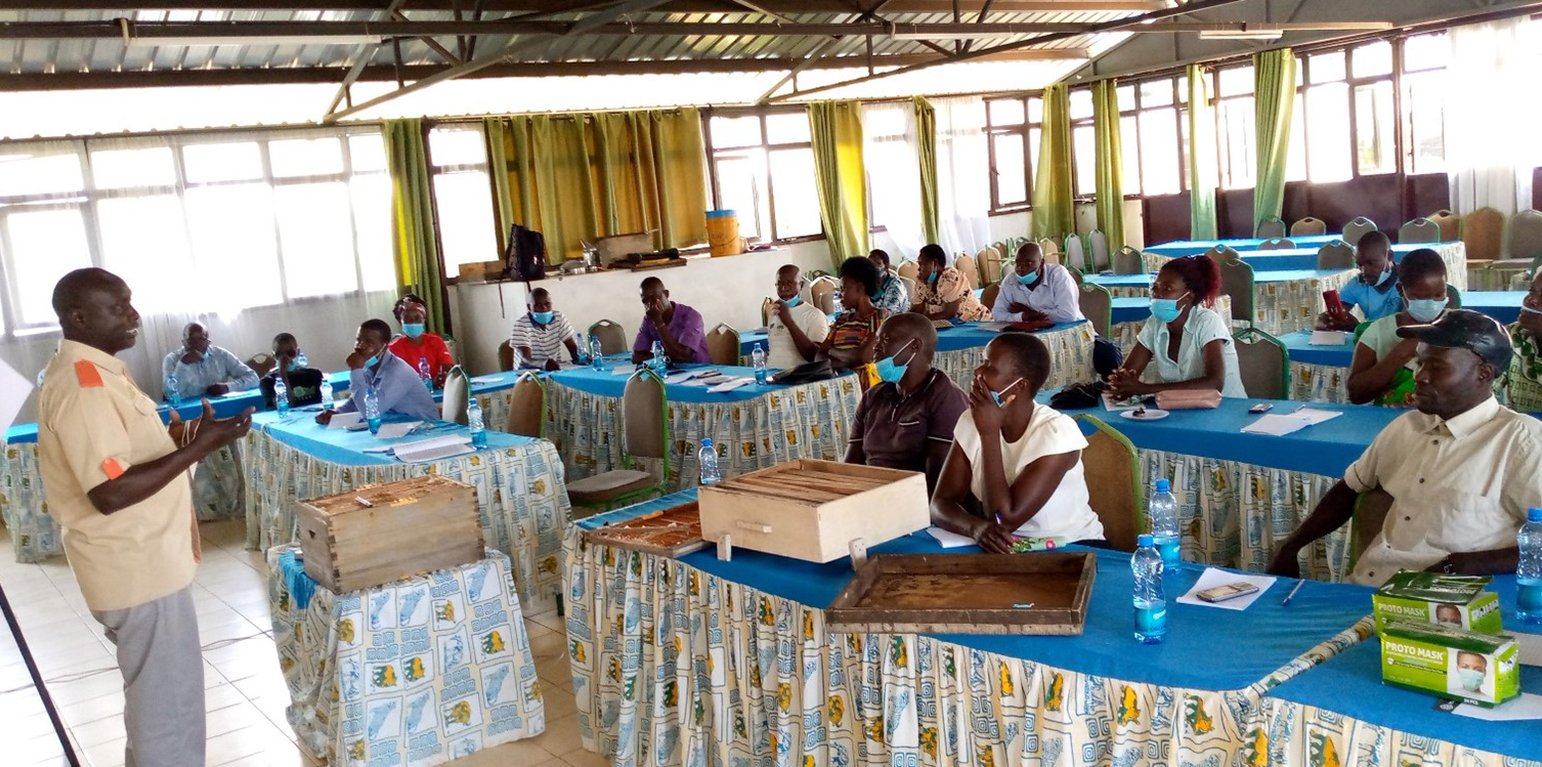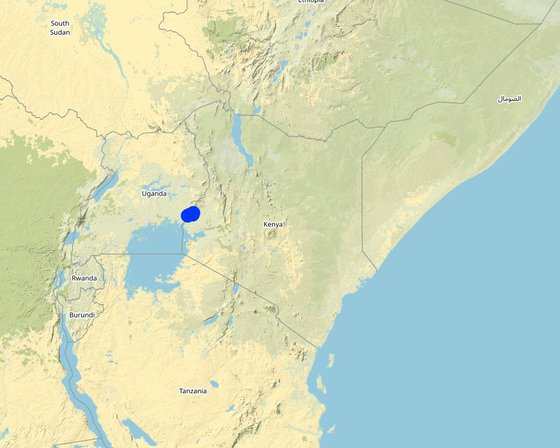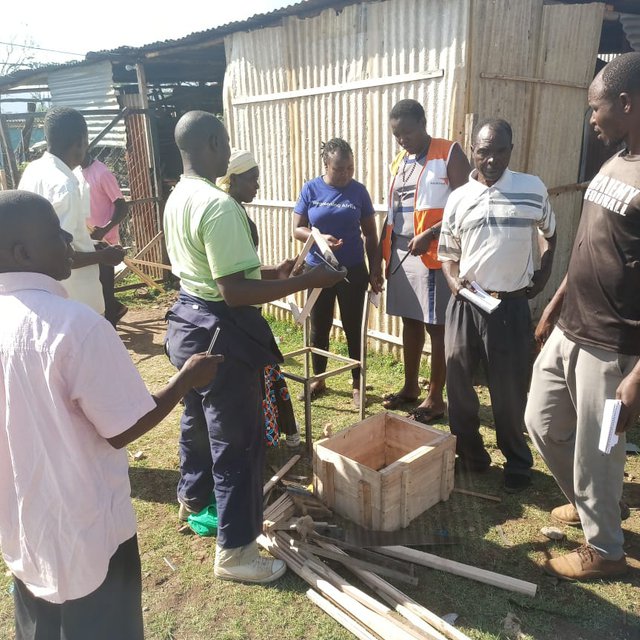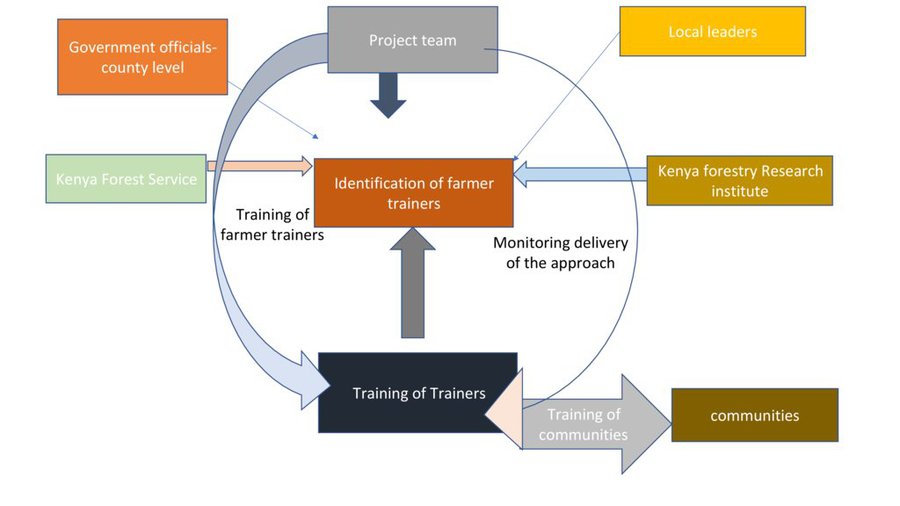



The Regreening Africa project identifies key individuals within communities who are trained on land restoration through beekeeping: the trainees then train others themselves. The characteristics of this “training of trainers” (ToT) approach is that it is community-based, and those selected for training work within areas they can reach with ease from their homes. They are also required to be practicing, or demonstrating interest in, one or more approaches promoted by the project. The selected persons include women, the disabled, and youth, as well as mature people who have the experience to integrate local knowledge.
The objectives of the approach are to cut down on the cost of implementing land restoration by building capacity at the local level. By promoting peer-learning and establishing learning sites within the community, it is believed that a greater number of people can be efficiently reached. The goal is to achieve more trees on farms (especially "bee-friendly" trees) and increased sales of honey and other products, leading to better living standards and a sustained, healthy environment.
Training includes technologies that cover tree growing (including farmer managed natural regeneration) with an emphasis on beekeeping as a commercial venture within a promising value chain. Thus, they are trained specifically on beekeeping as well as hive making to meet the high demand for honey. They are supported with high value seed and tree seedlings for integration into farms to support their apiary businesses. The main stakeholders involved include World Vision Kenya who mobilize farmers and link them to other actors in beekeeping value chains; ICRAF who provide training on beekeeping and hive making, as well as technologies for tree growing and management; and county government who have constituted a forum to regulate prices. Communities then implement the technologies. Initially the farming communities disliked bees due to possible attacks, but after training about setting up apiaries and bee-based businesses, and based on their experience after implementing the lessons learnt from the training, they have become more receptive to the approach.

地点: Homabay, 肯尼亚
启动日期: 2020
终止年份: 不适用
方法的类型
| 该方法涉及哪些利益相关者/执行机构? | 指定利益相关者 | 说明利益相关者的角色 |
| 当地土地使用者/当地社区 | land owners | provide labor, manage the technology, contribute local knowledge |
| 社区组织 | community champions, village loaning and saving association | local experts, share lessons on SLM, provide loans and opportunities for saving |
| SLM专家/农业顾问 | County extension agents | provide training and linkages |
| 研究人员 | International NGOS, universities, local NGOs | provide technical support, provide research funds |
| 教师/学龄儿童/学生 | school clubs, patrons, environmental enthusiast | implement technologies, scale the knowledge through skits, songs and poems |
| 私营部门 | private nurseries | provide seedlings |
| 地方政府 | county government constituted a forum to regulate prices |
government, project team, community leaders identify project stakeholders to be trained, trained farmers train other farmers.

决策是由......做出的
决策是基于
Beekeeping for land restoration, tree nursery establishment and management, honey value chain development
Training of trainers received training on nursery establishment and were supported with seeds of preferred species.
土地使用者的劳动力为
Recognition, best performing training of trainers were visited by the donors and other partners to learn from the approach. that gave them a sense of prestige and motivation and challenged the other ToTs to do better so next time they receive visitors.
beekeeping for land restoration is widely adopted in Homabay county.
incentives for land restoration was a major learning from the approach
yes, beekeeping generate food and income for the households that encouraged them to scale and maintain the integrity of the environment.
the cost incurred was training, which was also done at the local level
some groups were able to get loans from the loaning and saving groups
yes through peer learning, knowledge products, experience from implementation
presentation of the approaches and interactive sessions during joint learning and reflection meetings
through the value chain platforms the stakeholders were able to identify others opportunities for linkages and partnership.
the approach is inclusive
youths and women were allowed to practise SLM on family land
bees provide honey that is used as food. trees foraged on by trees also provided other products such as fruits and product sold to generate income.
through linkages and sharing of market information
through trainings on FMNR farmers are able to access pruning for use as firewood and reducing destruction of the entire tree
crop failure due to unreliable rains are mitigated through use of tree crops established on farms and reduced surface runoff improving rainfall productivity.
for nursery operators, fruit sellers, honey producers and processors
sustainability is integral part of the approach, the approach thus build local institutions structures to ensures the technology is implemented with or without the external support